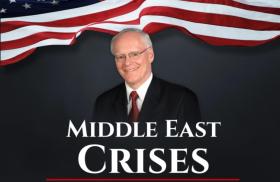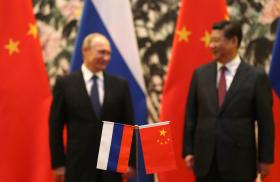Yesterday, Prince Sultan, the Saudi second deputy prime minister and minister of defense and civil aviation, left Tehran after meetings with senior Iranian leaders, including Ayatollah 'Ali Khamene'i, President Muhammad Khatami, and Defense Minister 'Ali Shamkhani. The talks centered on ways to increase regional stability, the signing of a civil aviation agreement, and laying the groundwork for the visit of the Iranian president to Riyadh in two weeks. Such high-level meetings have not occurred for more than two decades. Whereas many differences continue to separate Saudi Arabia and Iran, one vital interest that they share -- maximizing oil revenue -- has been a powerful factor bringing them together. The rapprochement between these two regional powerhouses could have significant effects on the Organization of Petroleum Exporting Countries (OPEC).
OPEC: Who Belongs, Who Does Not?
OPEC was not an effective forum for reversing the dramatic decline in oil prices in 1998. Instead, it took a deal between Saudi Arabia and Iran, which was the basis for the March agreement by oil exporters -- OPEC and non-OPEC members alike -- to cut output. This deal, which has raised oil prices by more than 50 percent, increased expected 1999 oil revenues by about $3 billion for the Saudis and $1.5 billion for the Iranians.
Many observers have noted the irrational nature of OPEC membership. At its founding in 1960, OPEC comprised all the important large petroleum exporters -- Saudi Arabia, Iraq, Iran, Kuwait, and Venezuela. But today, relatively small exporters -- such as Algeria, Qatar, Nigeria, and Indonesia -- are members, whereas much larger producers -- Russia, Mexico, and Norway -- are not. As one high-ranking Nigerian oil official put it, "Every time I walk past the Mexicans or the Norwegians, on my way to an OPEC meeting, I feel a little guilty." Aside from low export levels, some OPEC countries have much smaller proven reserves than some non-OPEC states. For example, Qatar's reserves are 3.7 billion barrels whereas Mexico's stand at 40 billion. If one were to set an arbitrary basement of 1 million barrels per day of exports for membership, eleven countries would qualify. This group would exclude current OPEC members Qatar, Indonesia, and Algeria but include Russia, Mexico, and Norway. Iraq would naturally be included, as its exports will continue to rise and it has the world's second largest proven reserves. Finally, the Central Asian republic of Kazakstan, with proven reserves of around 20 billion barrels, would be another possible candidate for inclusion.
A reorganization along these lines would make economic and political sense. With 75 percent of world oil exports and 53 percent of total world oil output, this new grouping would have unprecedented power to manage oil production and prices. Another benefit that would come from this reorganization would be more cohesive policymaking, which is hard to achieve with the smaller producers in OPEC. For Russia, Mexico, and Norway, the advantage would be that oil prices could be kept at moderate levels more effectively, without requiring a sharp crisis like the 1998-1999 price collapse. New entrants would have to pay a price though: Current OPEC members would insist that Russia, Mexico, and Norway share a more equitable burden of future production cuts, if such cuts were necessary. In the March 1999 cuts, Iran and Venezuela reduced their output by more than double the required cutback of the Mexicans and Norwegians, despite the fact that all four countries have comparable outputs. Were these two countries formally part of OPEC, perhaps an additional 250,000 barrels per day would have been taken of the market. Therefore, there is a question as to whether they would join. The main benefit would be that, because prices would be better managed, they would not have to face such dire economic situations as they did in the last six months.
Reorganization: Yes or No?
Such a reorganization would not be easy, as there would be severe resistance from those asked to leave the organization. As a perturbed Qatari official said, "We have no intention of leaving OPEC, and this whole idea is clearly a Saudi ploy undertaken for political rather than economic reasons." Whereas it is true that the relationship between Saudi Arabia and neighboring Qatar have not been smooth recently, the economic figures alone are compelling enough to warrant Qatar's removal from a redesigned OPEC, without taking political motivations into account. Countries such as Qatar and Indonesia may balk at being asked to leave this exclusive club, but the higher petroleum prices that may result could ease the transition for them.
Hints of movement in this direction have already appeared. Late last year, Saudi oil minister 'Ali Al-Naimi called for the creation of an "informal" petroleum group, composed of the largest exporting countries. Also, the main breakthrough of March's OPEC meeting in Vienna -- Saudi production cuts -- was negotiated outside traditional OPEC channels. While Russia, Norway, and Mexico did not directly take part in these discussions, the Saudis and Iranians kept them closely informed of the proceedings.
If this trend continues, and if OPEC does not conjure up the will to reinvent itself, a new organization that takes its place may be created of large-volume exporters only. It could be called "OLPEC" -- the Organization of Large Petroleum Exporting Countries. Such an organization would control a larger share of world output, and thus wield much more influence on petroleum policy and pricing. A taste of this power can be seen in the Vienna cuts, which were orchestrated by what would be the core of OLPEC, and which had an immediate and positive impact on oil prices.
The Importance of Saudi-Iranian Relations
The warming of relations between Saudi Arabia and Iran, symbolized by the upcoming visit of President Khatami to Riyadh, is likely to have major political, and economic repercussions if it continues to progress. The March production cuts and resulting hike in oil prices -- perhaps the last major petroleum event of the century -- was the first fruit of this emerging partnership. Now that these two oil giants are working more closely together, they may turn their attention to transforming OPEC into a more effective organization for meeting the needs of the large petroleum exporters.
MAJOR PETROLEUM EXPORTERS
| COUNTRY | Proven Reserves in billions of barrels | Production Cuts in barrels/day | New Production Quotas in mbd | Domestic Consumption in mbd | Total Exports in mbd |
| Saudi Arabia | 262 | 585,000 |
7.44 |
1.21 | 6.23 |
|---|---|---|---|---|---|
| Russia | 57 | 100,000 |
6.03 |
2.57 | 3.46 |
| Norway | 27 | 100,000 |
3.18 |
0.22 | 2.96 |
| Venezuela | 73 | 125,000 |
2.72 |
0.44 | 2.28 |
| Iraq | 113 | -- |
2.60 |
0.35 | 2.25 |
| Iran | 90 | 264,000 |
3.36 |
1.26 | 2.10 |
| UAE | 98 | 157,000 |
2.00 |
0.35 | 1.84 |
| Kuwait | 97 | 144,000 |
1.84 |
0.16 | 1.68 |
| Nigeria | 23 | 148,000 |
1.89 |
0.22 | 1.67 |
| Mexico | 48 | 125,000 |
3.24 |
1.69 | 1.55 |
| Libya | 30 | 96,000 |
1.23 |
0.20 | 1.03 |
| Qatar | 4 | 47,000 |
0.59 |
0.02 | 0.57 |
| Algeria | 9 | 57,000 |
0.73 |
0.20 | 0.53 |
| Indonesia | 9 | 93,000 |
1.19 |
0.97 | 0.22 |
Nawaf Obaid is a visiting research fellow at The Washington Institute.
Policy #388


